This Dell Medical School health worker made sure Austin mom wasn't alone in medical crisis
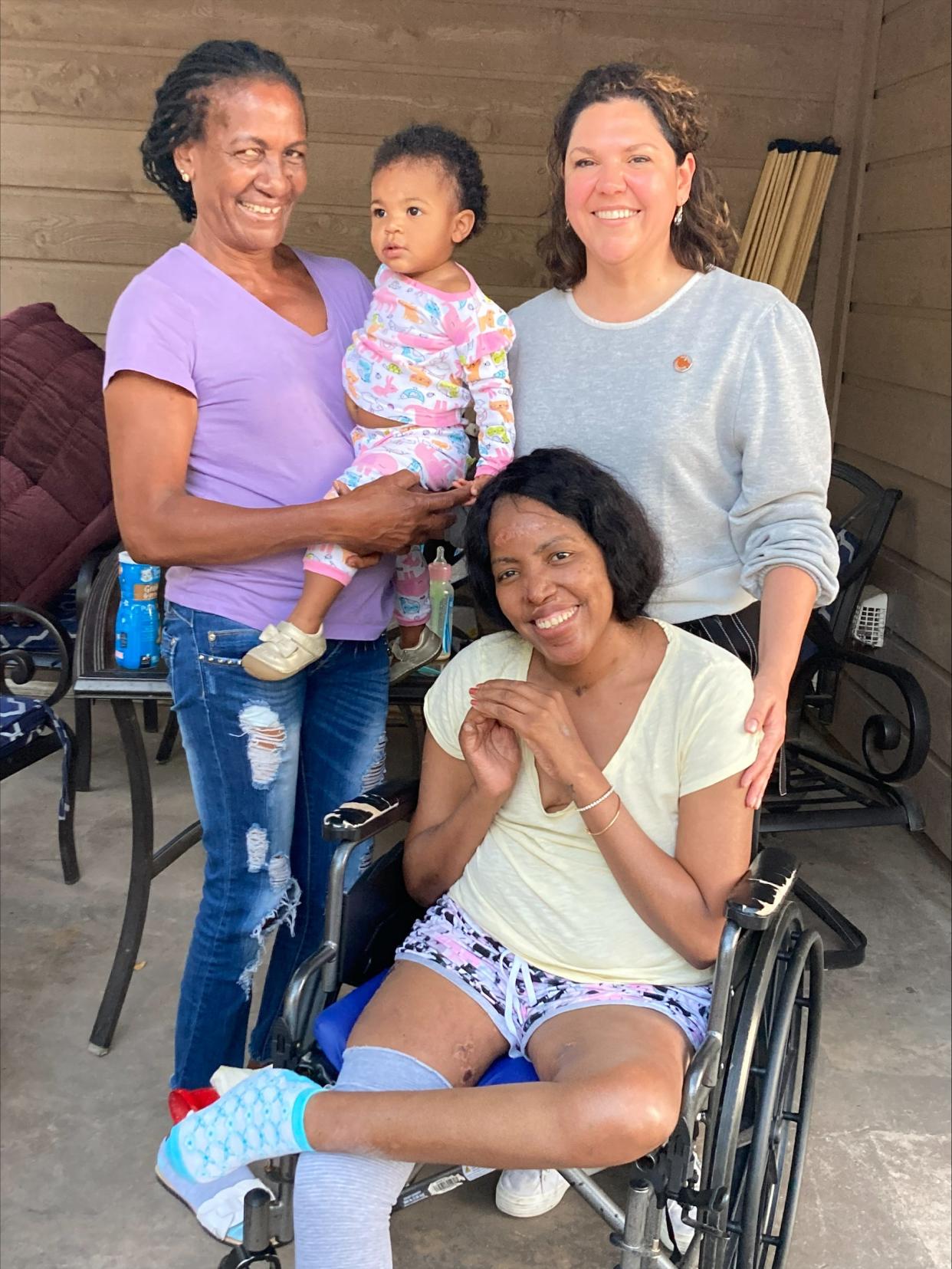
One-year-old Elif is dancing in the front of the lecture hall at the University of Texas Dell Medical School on an October morning. She's clapping her hands and playing with a toy. With her is her mom, Maidelys Hernandez, and her grandmother Josefina Gasso.
The family is now together in part thanks to the dogged determination of a Dell Medical School community health worker at Dell Seton Medical Center.
Community health workers are employed by health care centers to help people access care. They are not doctors or nurses or social workers. They work with individuals to improve health outcomes by finding people who might have trouble accessing the health system and focus on getting them connected to services. Community health workers receive certification training through the Texas Department of State Health Services.
"The structure of the health system is such that even doctors don't know how to navigate it," said Dr. Snehal Patel, a specialist in hospital care at Dell Seton Medical Center. "A patient or family member trying to navigate the complexity of the health system without external support is a big challenge."
Health organizations throughout Central Texas use community health workers to engage people in their different programs and improve health outcomes. Dell Medical School's team of seven work inside the Dell Seton Medical Center as well as at community clinics and in activating the school's public health projects.
Access to a community health worker is not something someone signs up to receive. Instead, the community health workers seek out the people in most need of their services or people who would qualify for the program or service they are promoting.
Community health workers become the bridge from the hospital to home or from the clinic to home. In general, "80% of someone's health happens outside of the clinic," said Ricardo Garay, program manager for the community engagement and health equity team at Dell Medical School and supervisor of the community health workers at the school. A lot of the work of the community health worker, he said, "is focusing on that 80%."
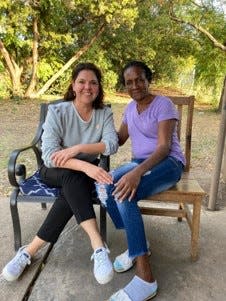
Patel said, as a doctor, "you often feel like you're not able to do what's necessary to advance the long-term health of person. We can do a lot of great stuff to treat a heart attack, but if we can't help figure out this person's rent, maybe you feel like you're putting a Band-Aid on a problem. Working with community health workers, you can address other issues. It feels really gratifying. We're doing everything we can to help this heart attack and, in addition, to be able to follow up and address other issues."
Dell Seton Medical Center began getting community health workers from Dell Medical School during the delta variant wave of the COVID-19 pandemic.
"The majority of our patients early in the pandemic were Latinx patients, and many of them had never seen a primary care provider," Patel said. It wasn't enough to just get them well, he said. They needed to recover at home and have resources that they didn't know existed or how to access. Community health workers became key in that follow-up care.
They also became key in preventing COVID-19 spread.
"During the pandemic, it was very obvious there was a disconnect between messaging and trust," Garay said. "That is where our role becomes very important."
Community health workers at different local health organizations helped distribute information about COVID-19 as well as personal protective equipment. Then they became front-line workers trying to get the community vaccinated as well as connecting the public to COVID-19 testing sites.
Today, community health workers continue to help Austin Public Health, the local health department, get more people immunized for COVID-19, flu and monkeypox. They also help with shelters and water distribution in emergencies. They help people with chronic illnesses such as diabetes manage their disease as well as educate the community on diabetes prevention. They do case management for pregnant people and postnatal care for new mothers. They are also the people you see at health fairs and health education presentations.
"At Austin Public Health, we call (community health workers) the 'secret sauce' because of their unique abilities to empathize with and reach community members, as well as their earned trust from their community," wrote William Malm, public information specialist at Austin Public Health. "They see the whole person and all the factors that influence their health and wellness: physical, mental, social, spiritual, and cultural. They have a unique knowledge of barriers to access and are experts in overcoming those barriers."
At Central Health, the Travis County hospital district, community health workers help enroll people in the Medical Access Program, which is health insurance for people at or below 200% of the poverty level. They also have been the people helping to get people onto Medicaid or Medicare if they qualify for those insurance programs.
Community health workers "really are a part of our collaborative care teams," said Veronica Buitron-Camacho, Central Health director of medical management. They work with the social workers, nurses and doctors to make sure that patients have what they need and connect them to community resources. That could mean helping someone get access to a food bank, getting a ramp on their house or filling out a housing application.
"These are critical needs that impact their health care," Buitron-Camacho said. Community health workers "figure out how we're going to work with them to get those needs met."
Central Health also uses community health workers to combat specific diseases such as kidney failure and diabetes that are impacting the community.
"If we didn't have community health workers, we would not get patients to engage as much as we do," Buitron-Camacho said.
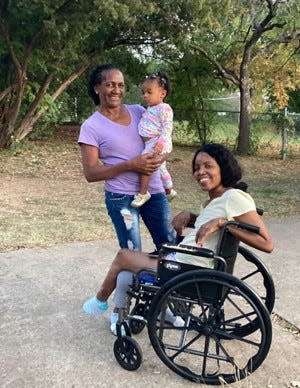
A different kind of case
Community health worker Brenda Garza first met Maidelys Hernandez three months after Hernandez had first entered a hospital to have her daughter Elif.
Garza had been helping people in the immigrant community who had been hospitalized with COVID-19 and had never accessed health care in Austin. She called their families in Austin or Mexico or Central America and kept them updated. She helped families in Austin enroll in programs and then help the patients transition back home.
She often thought about her own health experience as an immigrant from Mexico living in Detroit in 2003. She was diagnosed with advanced breast cancer after struggling to get a mammogram or anyone in the medical community to listen to her. "I translated my own experience," she said. "How is this person feeling? ... How can I help them?"
She knew that often the patients were worrying about their families at home, and if she could help the families as well as reassure them that someone was looking out for their loved one, the patients would do better in the hospital.
The community health workers don't have a desk at the hospital, instead they float from room to room, talking to the doctors about their most difficult patients who could benefit from this support.
Hernandez started out like one of these cases. She had a very complex health situation, but to really help her, Garza would have to navigate the U.S. government, the Cuban government, Child Protective Services, Medicaid, Social Security Disability, the nonprofit SAFE Alliance, as well as Hernandez's health care needs.
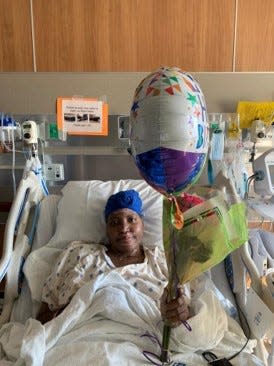
A mom in crisis
Maidelys Hernandez was 39 weeks pregnant on May 8, 2021, when she went into Ascension Seton Medical Center to be induced to give birth. Hernandez, who was 35, had immigrated to Austin from Cuba, where all of her family lived.
During the induction, Hernandez had a seizure and went into cardiac arrest. The staff performed CPR on her and did an emergency cesarean section.
Hernandez survived and baby Elif, was healthy, but the trauma of child birth led to escalating new health problems.
She began hemorrhaging. She went into shock and respiratory failure. Two days after that, her liver lacerated, she had more bleeding and a blood clot in a major artery in her abdomen.
She went into a coma when Elif was 8 days old.
The rest of that month, Hernandez had a blockage in her intestines and a bowel perforation. The lining of her abdomen was inflamed and she had bacteria in her bloodstream.
That June, there was some hope. She was responsive and off the ventilator for a while, but then she worsened and was back on the ventilator.
By July, her adrenal gland wasn't working well, and she had an abscess in her liver. She wasn't getting adequate blood flow to her leg.
She was transferred to Dell Seton for the hospital's wound care specialists. She had numerous surgeries, skin grafts and amputations of a leg, fingers and a breast. She had multiple bacterial infections. Then she developed pneumonia and severe malnutrition. Her body began to atrophy because she had been in the hospital so long.
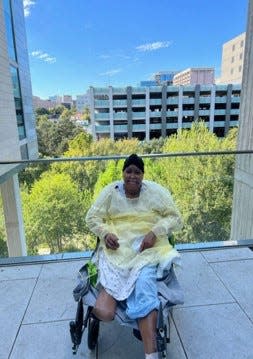
'I need to help her'
When Brenda Garza first met Hernandez, it didn't go over very well.
"It was actually funny," Hernandez said. "The first time I saw her I didn't think she could help me. ... She was always smiling. I didn't think she was serious enough. She showed me."
It took Garza a week after their first meeting to wrap her head around all that would need to be done for Hernandez and if she could do it.
"This is a person who I connect with, someone who needs help," Garza said. "She was alone here. Oh, I need to help her."
The first thing Garza wanted to do was find out how to bring Hernandez's mother, Josefina Gasso, to Austin from Cuba.
"It has been very, very hard," Gasso said. "I was very, very sad."
Garza and Hernandez began working with lawyers from the nonprofit RAICES (Refugee and Immigrant Center for Education and Legal Services) to get Gasso a visa. That took a full year and they had to elicit the help of U.S. Rep. Lloyd Doggett to get through some of the bureaucracy.
"I wanted to give up so many times in the process," Garza said. "I would think of the baby and the mom."
Hernandez, though, "wasn't very helpful," Garza said. "She wouldn't engage with me."
Then Garza would call Gasso, who would beg Garza to help her daughter.
Garza kept going. She began to understand Hernandez better and the trauma she had been through. "Every time I went to her room, it was something new, a new surgery," Garza said.
Garza kept showing up and eventually Hernandez began to engage. "Maidelys was my partner," Garza said. She became better at advocating for herself, making calls and filling out forms. "You help them recover and once they recover, they become their own advocates," Garza said.
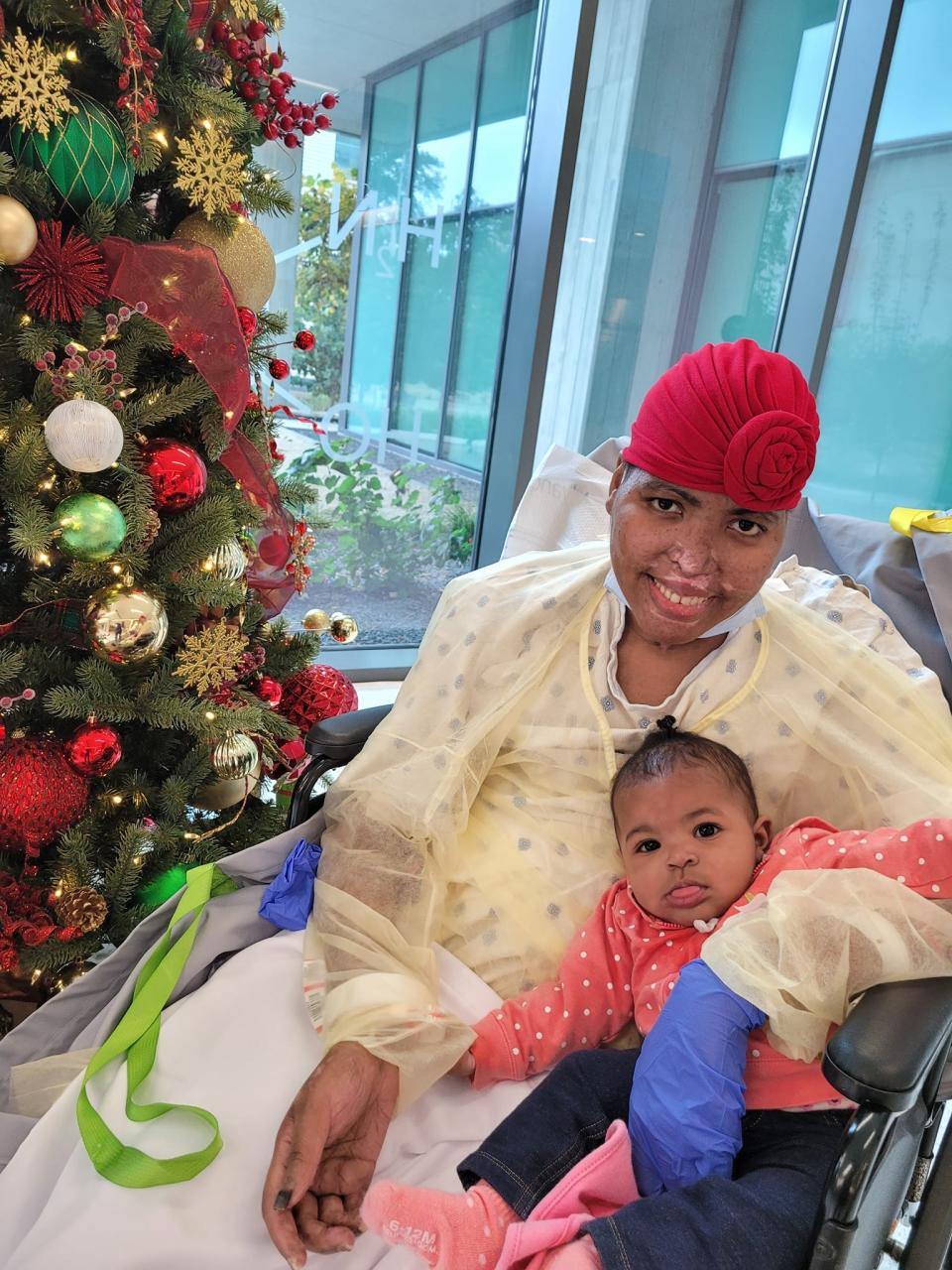
Meeting Elif
While working on the visa for Gasso, Garza knew Hernandez needed to connect with her baby and know that her baby was OK.
The baby's father had Elif but had cut off communication with Hernandez and her family. Garza decided to do a welfare check on Elif at the beginning of October.
The baby, who was almost 5 months old at this point, was dirty. Garza gave her a bath. "The baby wasn't safe," Garza said.
Garza called CPS, and Elif was placed with a foster family at the beginning of November.
Hernandez had not yet met her daughter. Garza coordinated with the foster family to bring Elif to the hospital to see her mom for the first time on Dec. 3, almost seven months after she was born. Hernandez then began receiving regular visits to build a relationship with her daughter.
On Dec. 13, 2021, Hernandez got to leave the hospital and move to a rehabilitation center.
Hernandez continued to work on her recovery and getting stronger. She took parenting classes and occupational therapy to be able to take care of her baby.
By June 2, Hernandez was fitted with a prosthesis and began learning to walk again. By July 20, she was able to leave rehab and move into a women's shelter.
Then on Sept. 20, Gasso received her visa and was able to come to Austin. A month later, Hernandez was given custody of Elif.
"I'd like to thank them for all the support," Hernandez said of the team. "This has been a very strong trauma for us. ... I've been able to recover. ... I take strength from the team. I realized I wasn't alone."
"I'd like to focus on recovery mainly," Hernandez said of her new life. "I would like to have a house. I would like to study, and have a career."
Garza has big dreams for Hernandez: "My hope is that she becomes an advocate the same way I did after cancer. I know she can do the same. I'm going to help her."
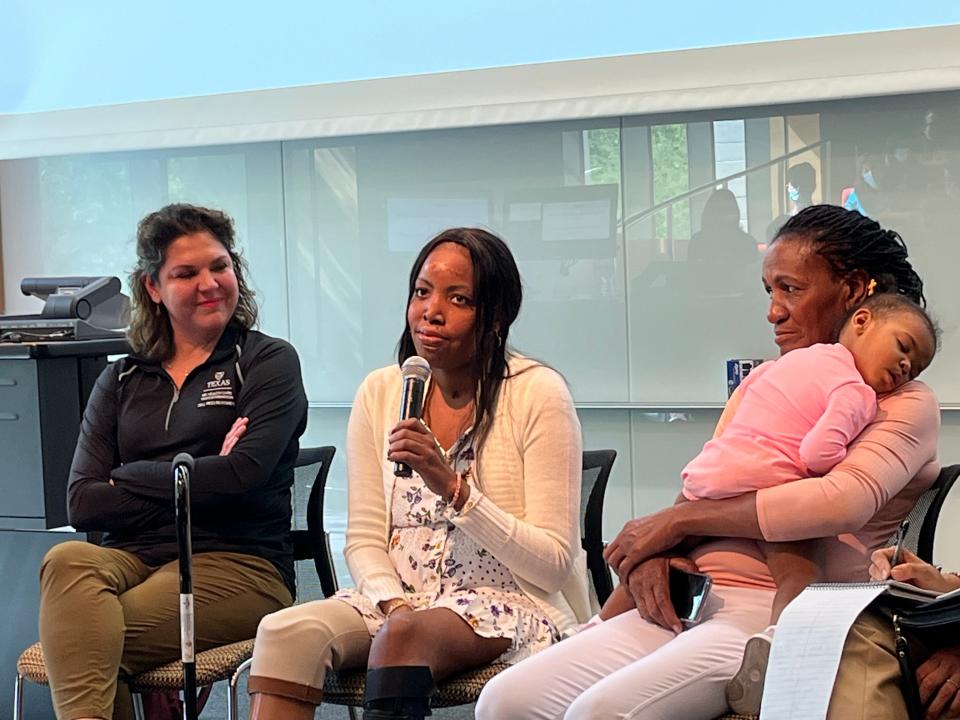
Growing community health worker programs
Most community health workers have some lived experience, like Garza, but you can be as young as 16 to take the training.
Garay — who is on the board of both the National Association of Community Health Workers and the Texas Association of Promotores and Community Health Workers — says the training is not about charity or helping people. It's about building a partnership: "We are working with patients. They're teaching us. We're teaching them."
In Garay's ideal world, there would be hundreds of community health workers throughout Austin, instead of the handful at each organization.
Garay's team and Garza through the Value Institute are researching the effect community health workers have and the cost-savings that they can bring. Currently, the community health workers project is grant-funded through the Michael and Susan Dell Foundation, the city of Austin and other sources.
Patel said the Dell Medical School had to start with a small model to do the research to make it into a larger model after research and evaluation. "What's actually working? How do we make things better? How do we better integrate community health workers into the health care system?" are some of the basic questions they are asking.
Patel said: "100% of patients admitted to the hospital could benefit from a community health worker. We don't have that resource right now."
This article originally appeared on Austin American-Statesman: Austin community health worker helps mom recover from birth trauma

